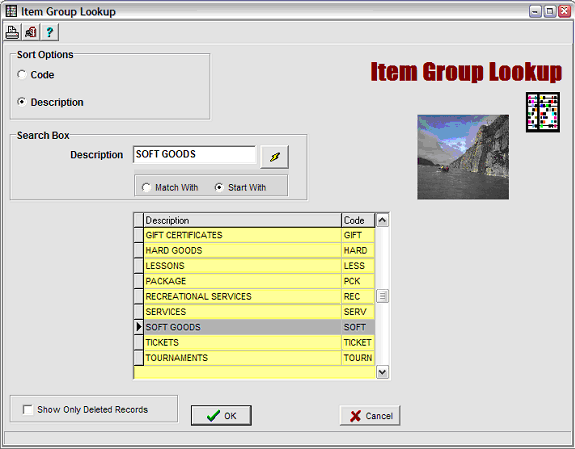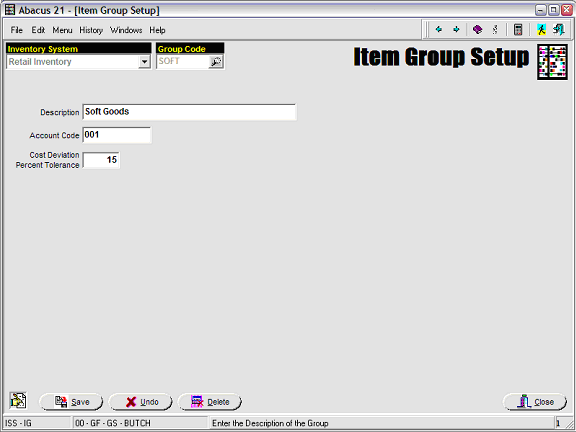

Inventory Item Groups are 'segmentations' of Inventory... that are used for Physical Inventory Selection criteria and for Inventory Valuation breakouts. (They are also used as defaults for establishing Last-Cost to Current-Cost variation tolerances.) These are 'required' fields -- and are User-defined.
These Inventory Groups are assigned at the Item Master level... and are 'defaulted' into the Item-Outlet levels (but can be changed).

In an overall sense, these Inventory Groups are different from Sales Categories -- the former relating to 'Inventory' and the later to 'POS Sales'. Typically, the Inventory Groups are broader classifications than the Sales Categories. (Where job responsibilities are divided, the Inventory-Accounting personnel determine the Inventory Group classifications... where as the Marketing-Sales people determine the more-detailed Sales Categories.)
In a Retail context, examples of Inventory Groups might be Hard Goods vs. Soft Goods vs. Accessories vs. Sundries vs. Services. Also in a Retail context, examples of Sales Categories might be Men's Sweaters, Women's Sweaters, Men's Shorts, Women's Shorts, Men's Shirts, Women's Shirts, etc. -- all of which (as an example in this case) pertinent to Soft Goods. (Note, however, that Sales Categories do NOT have to literally align themselves to consistently Inventory Groups as in this illustration... although oftentimes, particularly in Retail, they do.)
Note: There is another field called 'Item Type' -- which is even broader than Inventory Group. A example would be, for instance, 'Merchandise' vs. 'Services' vs. 'Supplies'... where the Inventory Groups 'Hard Goods', 'Soft Goods', and 'Accessories' might all be related to Item Type of "Merchandise".
The primary Inventory Analysis Reports work off Inventory Groups... whereas the Sales Analysis Reports work off the Sales Categories.
Below is a screen illustrating the setup for a typical Inventory Item Group "Soft Goods":

Note that Inventory Item Groups are per Inventory System.
Group Code: A Code (abbreviation) for the Item Group.
Description: The Description of the Inventory Item Group.
Account Code: An alphanumeric Code (User-defined, non-validated).
This Code is for future 'classification' use; it must be filled in with anything non-blank.
Cost Deviation Percent Tolerance: A Percent (whole %) that is used to monitor 'new' Costs (on Received Items) to 'last' Cost for that Item.
The P/O and Receiving Systems will 'notify' the User that the 'new' Cost varies from the 'last' Cost whenever the deviation exceeds this percentage.